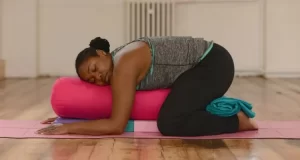Why Build a Home Gym in the First Place?
Let’s be honest: finding time for the gym isn’t always easy. Between commuting, work deadlines, family, and – let’s face it – just life, it’s no wonder people struggle to stay consistent. A home gym solves that.
- Convenience: Work out anytime, rain or shine
- Privacy: No judgment, no waiting for machines
- Savings: One-time investments beat monthly gym memberships over time
- Consistency: Easy access = fewer excuses
But before you run to the nearest sports store or start scrolling Amazon, here’s everything you need to build a smart, functional, and budget-friendly home gym.
Also Read
Step 1: Define Your Fitness Goals
Before buying anything, ask yourself:
- Are you focused on weight loss or cardio health?
- Do you want to build muscle or improve flexibility and mobility?
- Are you training for strength, endurance, or general fitness?
Why it matters: The type of exercises you need to do will determine the right equipment. No sense buying a squat rack if yoga is your vibe.
Step 2: Choose the Right Space
You don’t need an entire garage to build a home gym. Consider spaces like:
- A spare bedroom
- A corner of your living room
- A patio or balcony
- Even just enough space for a yoga mat!
Tip: Make sure the floor is level and can support equipment weight. You might also want to use rubber flooring or mats to protect surfaces.
Step 3: Must-Have Home Gym Equipment (Beginner to Advanced)
1. Resistance Bands (Budget-Friendly & Portable)
- Great for strength training, stretching, and mobility
- Perfect for beginners, seniors, or travel workouts
- Incredibly versatile and space-saving
Price Range: $10–$30
2. Yoga Mat or Exercise Mat
- Essential for floor exercises, stretches, yoga, and HIIT
- Prevents slipping and protects your joints
Price Range: $15–$50
3. Dumbbells or Adjustable Weights
- Ideal for strength and resistance training
- Go for adjustable dumbbells to save space and money
- Common weights: 5 lb, 10 lb, 20 lb, etc.
Price Range: $50–$300 (adjustable sets cost more upfront but save space)
4. Treadmill or Stationary Bike (Cardio Heroes)
- Great for running, walking, or cycling indoors
- Treadmills: Look for foldable options if you’re tight on space
- Bikes: More affordable and often quieter
Price Range:
- Treadmills: $300–$2,000
- Bikes: $200–$1,500
5. Step Stepper or Stair Climber
- Compact cardio machine that targets calves, thighs, and glutes
- Low impact for joint health
- Advanced models include heart rate monitors and digital stats
Price Range: $80–$2,000
6. Pull-Up Bar or Suspension Trainer (for Upper Body Strength)
- Door-mounted pull-up bars are cheap and effective
- Suspension trainers like TRX are great for full-body workouts
Price Range: $25–$200
7. Weight Bench & Barbell (If You’re Going Big)
- Essential if you’re into serious weightlifting
- Look for foldable benches if space is limited
Price Range: $100–$500+
Step 4: Smart Budgeting Tips for Home Gym Setup
- Start small: You don’t need everything at once. Start with the basics like a mat, bands, and dumbbells.
- Buy used: Facebook Marketplace, Craigslist, or local groups often have great deals on gently-used equipment.
- Wait for deals: Look for holiday sales, fitness promos, or end-of-year clearances.
- Skip the brand names: Quality doesn’t always mean expensive. Check reviews and ratings before buying.
- Multi-functional gear = money saved: Adjustable weights or all-in-one benches can save both cash and space.
Step 5: Design Your Home Gym Space
Here are a few things to consider for functionality and motivation:
- Mirrors: Help track form and create the illusion of a bigger space
- Lighting: Bright, natural lighting keeps energy up
- Sound: Add a speaker or playlist for motivation
- Storage: Use shelves, bins, or wall mounts to keep things tidy
- Inspiration board: Photos, goals, or progress tracking to stay focused
Step 6: Plan Your Workout Routine
Now that your gym is ready, don’t forget the most important part: consistency.
- Stick to a schedule: 3–5 days/week
- Use fitness apps like FitOn, Nike Training Club, or YouTube for guidance
- Track your progress: weight, reps, time, consistency
Building a home gym doesn’t require thousands of dollars or an entire basement. It just takes a little planning, smart choices, and commitment to your goals.
Whether you want to shed pounds, build muscle, or simply stay active – your home gym is an investment in your health and happiness.
So go ahead – skip the excuses and start building a space that works for you. Your future self will thank you.














